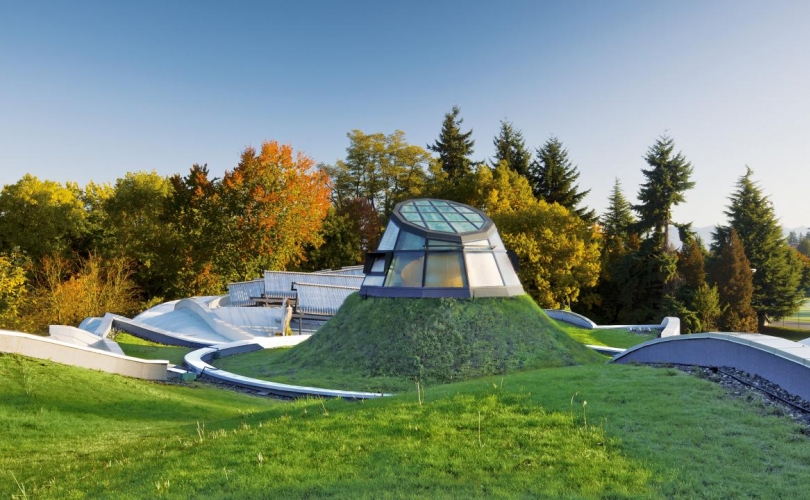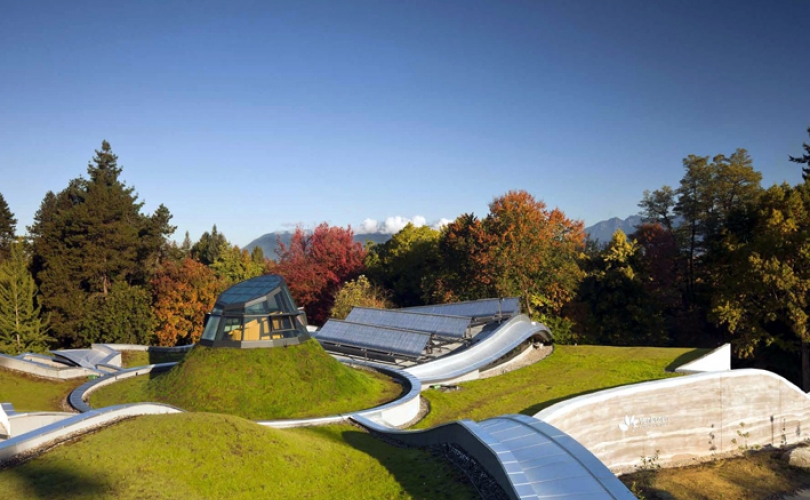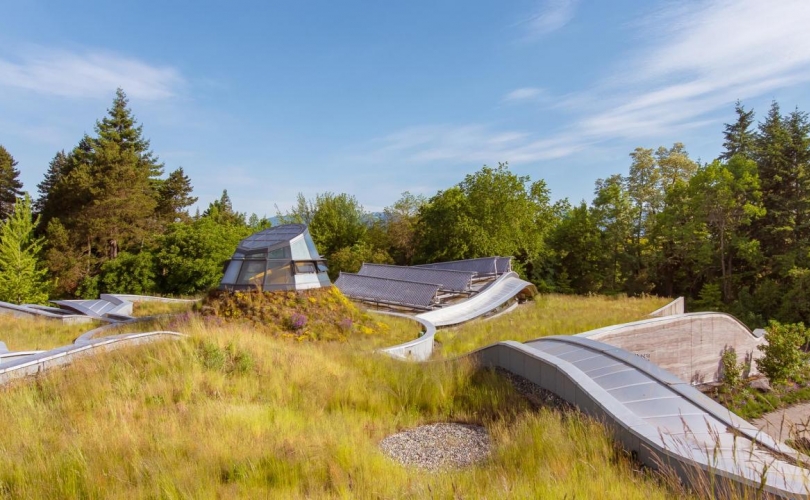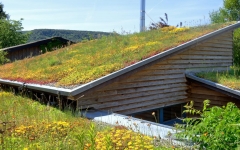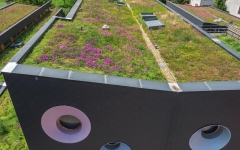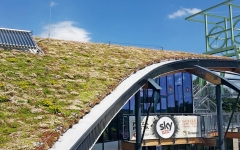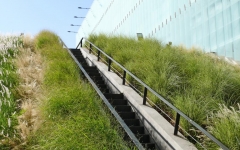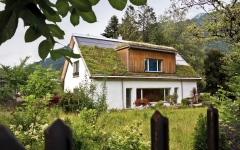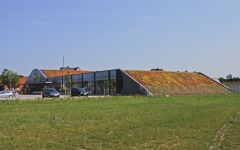As a rule, flat roofs should be sloped at no less than 2%. Slanted roofs in this context begin at 10°. From here on, the structure of the green roof changes when compared with structures used on slightly sloped and flat roofs. The shearing forces of the green roof structure grow with the gradient of the roof, and these are directed to sufficiently strong supports. The substrate layer needs to be protected against erosion as well. The gradient of the roof and the increased exposure it causes must be taken into account when selecting plants.
Additional watering during dry spells ensures an impressive appearance and increases the flowering time. Irrigation can be done by drip hoses along the ridge of the roof or by “overhead” irrigation by means of sprinklers or nozzles.
A professionally sealed roof using e.g. bitumen or synthetic foil is needed for the green roof to function continuously. The water insulation layer should be equipped with a root barrier, because it is very difficult to install additional root barriers onto a slanted roof using mats.
It is important to account for the maintenance needs of the green roof early on. Skylights can be used to ensure access onto the roof area. A sufficient number of anchor points should be designed around the roof area, so that people can anchor themselves when caring for or maintaining the roof.
If roof surfaces have been penetrated, it is important to bring the water barrier layer at least 100 mm above the substrate layer. Green roof structures can be lined with the stainless steel edge profile TRP 140 and fasteners (either Support Bracket TSH or Shear-Fix LF).
Solar panels can also be used on ridged roofs. The problem of how to install the system without penetrating the roof structures, for example by using the ZinCo Solar Base® system, is solved on a case-by-case basis.

